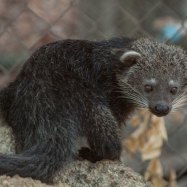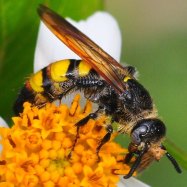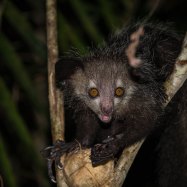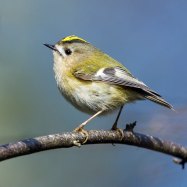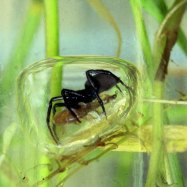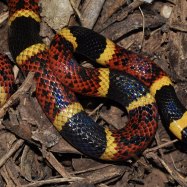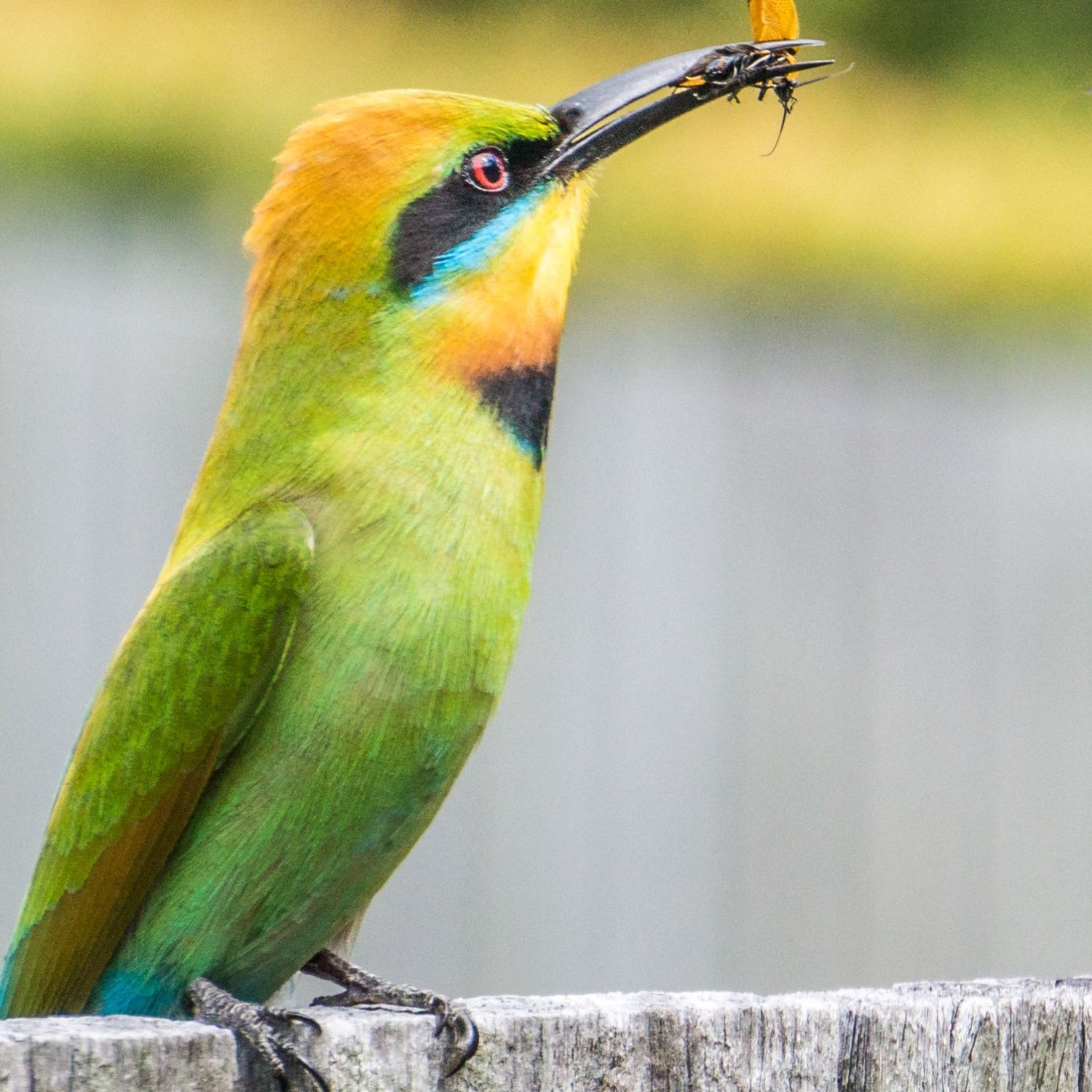
Bee Eater
20 to 46 centimeters
Bee eaters are fascinating birds with their vibrant colors and long, slender bodies. Ranging from 20 to 46 centimeters in length, these birds can be found in Africa, Asia, and Europe. Belonging to the Meropidae family, the bee eater's sharp beak is perfectly designed to catch and eat bees. Keep an eye out for these beautiful birds on your next outdoor adventure. #BeeEater #Birdwatching #NatureLovers
Animal Details Summary:
Common Name: Bee Eater
Kingdom: Animalia
Habitat: Open woodlands, savannas, grasslands, and semi-deserts
The Amazing Bee Eater: A Colorful Hunter in the Skies
In the vast and diverse animal kingdom, there are countless magnificent species that captivate us with their beauty, behavior, and unique characteristics. One such species is the Bee Eater, scientifically known as Merops. These stunning birds are well-known for their brightly colored plumage and their remarkable hunting techniques. With their slender and streamlined bodies, they are often seen swiftly navigating through the skies, catching their prey with incredible precision Bee Eater. Let's take a closer look at these striking birds and discover what makes them stand out in the avian world.A Royal Bird of the Animal Kingdom
The Bee Eater belongs to the Animalia Kingdom, which encompasses all animals. In the Phylum Chordata, they are classified as birds, falling under the Class Aves. Within the Aves class, they belong to the Order Coraciiformes, which also includes kingfishers and rollers. Bee Eaters belong to the family Meropidae, and there are 27 recognized species within this family. Although they are widespread, they are not very abundant, and many of their species are considered threatened or endangered due to habitat loss.A Habitat for Every Taste
Bee Eaters have a diverse range of habitats, which explains their presence across Africa, Asia, and Europe. They prefer open woodlands, savannas, grasslands, and semi-deserts, where they can find perches to spot their flying prey and nesting sites in the soft ground. Some species also occupy wetlands and mangroves Banded Water Snake. This variety of habitats gives them access to a wide variety of insects, which make up their diet.A Master Hunter
It's no surprise that Bee Eaters have the word "eater" in their common name as they have a reputation for being impressive insectivores. Their long, thin, and pointed bills are their main hunting tools. They use them to catch flying insects, such as bees, wasps, beetles, and dragonflies, in mid-air. They are incredibly fast and agile, which helps them snatch their prey with outstanding accuracy. They can also catch several insects in one flight, using their beak to toss and catch them in the air.A Multicolored Elegance in Flight
One of the most striking features of Bee Eaters is undoubtedly their colorful plumage. Their bodies are adorned with a rainbow of colors, including shades of green, blue, red, and yellow. This plumage serves two purposes - it helps them camouflage in their surroundings, and it also attracts potential mates. Their feathers are soft and sleek, which not only enhances their beauty but also helps them glide through the air with minimal resistance.A Sleek and Streamlined Body
Bee Eaters have a unique body shape, which allows them to be efficient hunters. They have a slender and streamlined body, which minimizes air resistance during flying and keep them well-balanced during their swift turns and dives. This body shape also helps them maintain their speed and maneuverability. Additionally, their wings are pointed and elongated, allowing them to make quick and sharp turns to catch their prey.Size Does Matter
The size of Bee Eaters varies among species, with the smallest species measuring only 20 centimeters in length. The largest species can reach up to 46 centimeters in length. Interestingly, there is also a noticeable size difference between male and female Bee Eaters, with the latter being slightly bigger. Their size is an advantage when it comes to finding suitable prey and defending their territory.A Global Presence
Bee Eaters have a widespread geographical distribution, with various species found in different regions of the world. Some species, like the European Bee Eater, are present in multiple countries. They can also be found in large parts of Africa, from the Sahara desert to South Africa. In Asia, they are found in countries like China, India, and Sri Lanka. They are also seen in parts of Europe, including Spain, Portugal, and the Balkan Peninsula.Threatened by Habitat Loss
Despite their wide distribution, many species of Bee Eaters are facing population decline due to habitat loss. As humans continue to expand their settlements, convert forests for agriculture, and disrupt ecosystems, these birds are losing their natural habitats and food sources. Some species also face hunting pressure for their colorful feathers, poaching for the pet trade, and other human-induced disturbances. It is crucial to protect the habitats of these fascinating birds to ensure their survival.An Essential Role in Ecosystems
Apart from being beautiful and skillful hunters, Bee Eaters also play a vital role in maintaining ecological balance. They help control insect populations, which can be beneficial for agricultural crops and other plants. At the same time, they also act as prey for larger animals, such as birds of prey, which helps maintain the balance in the food chain. Losing these birds can have a ripple effect on the ecosystem, impacting other species and ultimately humans.A Sight to Behold
Imagine walking through an open woodland, and suddenly a colorful bird swoops down and catches an insect right before your eyes. This is the kind of experience that Bee Eaters offer to those lucky enough to spot them in the wild. Their stunning colors, remarkable hunting techniques, and overall elegance make them a truly remarkable species. With their global presence and essential role in the environment, they are undoubtedly a must-see for any nature lover.Avian Beauties
In conclusion, Bee Eaters are a fascinating group of birds that have captured the hearts of many with their vibrant colors and impressive skills. Their diversity, global presence, and essential role in ecosystems make them stand out in the avian world. However, their populations are declining, and it is up to us to protect their habitats and ensure that they continue to grace the skies for generations to come. So the next time you spot a Bee Eater, take a moment to appreciate these magnificent creatures and their place in the natural world.

Bee Eater
Animal Details Bee Eater - Scientific Name: Merops
- Category: Animals B
- Scientific Name: Merops
- Common Name: Bee Eater
- Kingdom: Animalia
- Phylum: Chordata
- Class: Aves
- Order: Coraciiformes
- Family: Meropidae
- Habitat: Open woodlands, savannas, grasslands, and semi-deserts
- Feeding Method: Insectivorous
- Geographical Distribution: Africa, Asia, Europe
- Country of Origin: Various countries
- Location: Bee Eaters can be found in various habitats across Africa, Asia, and Europe.
- Animal Coloration: Brightly colored plumage
- Body Shape: Slender and streamlined
- Length: 20 to 46 centimeters
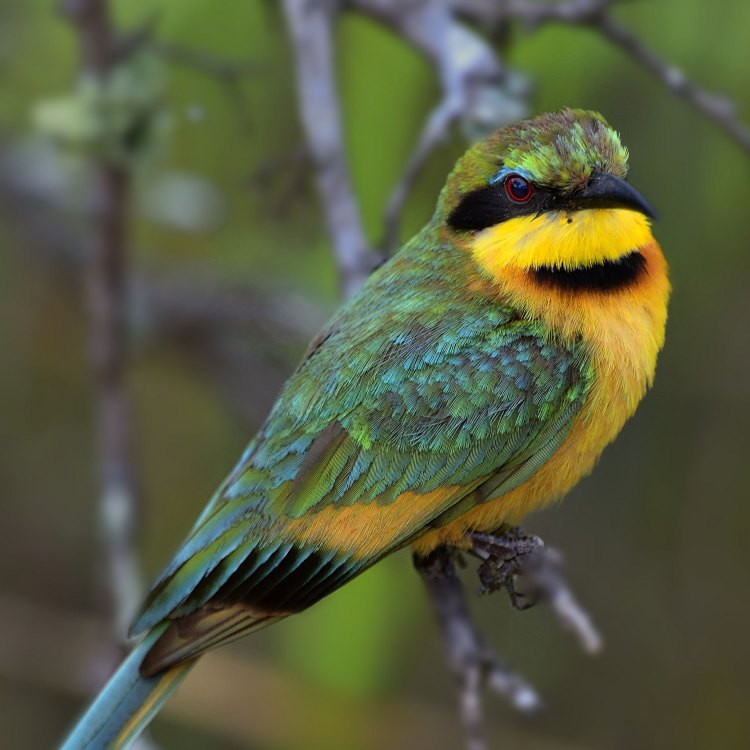
Bee Eater
- Adult Size: Small to medium-sized
- Average Lifespan: 5 to 20 years
- Reproduction: Monogamous
- Reproductive Behavior: Nest in burrows or tunnels
- Sound or Call: Distinctive calls and trills
- Migration Pattern: Some species are migratory, while others are resident
- Social Groups: Colonial nesters
- Behavior: Catch insects in mid-air
- Threats: Habitat loss, pollution, and climate change
- Conservation Status: Varies by species, but many are considered of least concern
- Impact on Ecosystem: Help control insect populations
- Human Use: Tourism, birdwatching
- Distinctive Features: Long pointed bill, vibrant plumage
- Interesting Facts: Some Bee Eaters are known to catch bees and wasps and remove their stingers before consuming them.
- Predator: Large birds of prey
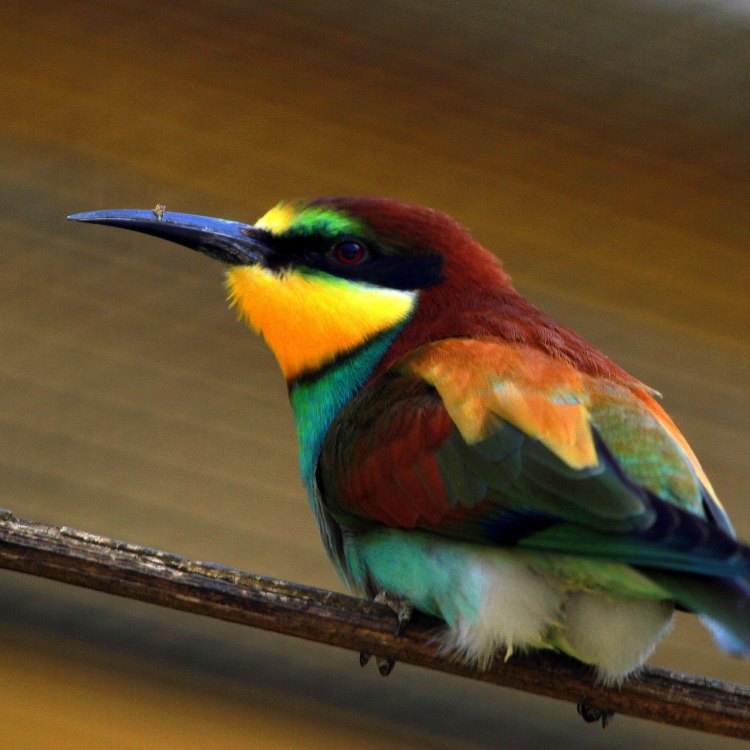
Merops
The Colorful and Fascinating World of Bee Eaters
When we hear the word "bee," we often think of the buzzing insects that produce sweet honey. However, there is another type of bee that is just as fascinating – the Bee Eater. These small to medium-sized birds have captured the hearts and attention of bird enthusiasts all over the world with their vibrant colors, unique behaviors, and important role in the ecosystem.Adult Bee Eaters come in a variety of sizes, with the smallest species measuring only 15 centimeters in length, while the largest can reach up to 35 centimeters PeaceOfAnimals.Com. They are slender birds with long wings and a distinct pointed bill, adapted for their insect-catching lifestyle. They are agile flyers, capable of swooping and gliding with ease, making them a delight to watch in action.
But what sets Bee Eaters apart from other birds is their stunning plumage. In fact, they are often considered one of the most colorful families of birds in the world. Their feathers come in various shades of green, blue, yellow, and orange, making them a sight to behold. It's no wonder they have become popular among birdwatchers and tourists, attracting thousands of visitors to their habitats every year.
But beyond their beauty, Bee Eaters are also fascinating creatures with unique behaviors and features. Let's take a closer look at their life cycle, habits, and the vital role they play in the ecosystem.
The Life of a Bee Eater
Bee Eaters are known to have a relatively long lifespan, ranging from 5 to 20 years in the wild Bird. They reach adulthood at around two years of age and are known to form lasting monogamous relationships with their partners. This means they mate with the same partner for life, and both parents take an active role in raising their young.During the breeding season, which varies depending on the species and location, male Bee Eaters will excavate nesting burrows in soft, sandy areas or find pre-existing tunnels to use. Some species, like the European Bee Eater, will even nest in the sides of cliffs. These burrows can be as deep as 1.5 meters and are used not just for nesting, but also as a shelter from predators and extreme weather conditions.
Bee Eaters are colonial nesters, which means that they prefer to live in large groups with other species of birds, often creating bustling communities of about 200 to 300 nests. This not only provides safety in numbers but also allows for easier communication and cooperation among the birds.
The Distinctive Calls and Trills of Bee Eaters
If you ever walk past a group of Bee Eaters, you'll most likely hear their distinctive calls and trills before you see them. These birds are known for their loud and distinct vocalizations, which they use for communication with their partners and fellow birds in their colony.Each species has its unique calls and trills, but they are generally high-pitched and can range from buzzing or rolling sounds to loud chattering. Their vocalizations also play a crucial role in establishing territory, attracting a mate, and warning others of potential danger.
The Migratory Patterns of Bee Eaters
Bee Eaters are found in various parts of the world, from Africa and Europe to Asia and Australia. And while some species are migratory, traveling long distances to reach their breeding grounds or find a suitable climate, others are resident birds, staying in the same area year-round.The migratory patterns of Bee Eaters also vary among species. For instance, the European Bee Eater travels all the way from Africa to Europe during the summer breeding season, while the Blue-cheeked Bee Eater makes a shorter journey, migrating from Africa to the Arabian Peninsula.
But regardless of their traveling distance, Bee Eaters are excellent navigators, using visual landmarks, magnetic fields, and the position of the sun to guide their journey. Their impressive navigation skills allow them to return to the same nesting sites year after year, making them loyal and predictable creatures.
The Important Role of Bee Eaters in the Ecosystem
Bee Eaters may be small birds, but they play a significant role in maintaining the balance of their ecosystem. These birds are aerial insectivores, meaning they catch insects while flying. They are skilled hunters, capable of catching insects in mid-air with their sharp bills and agile flight.Insects make up a significant portion of a Bee Eater's diet, with bees and wasps being their primary prey. Some of the methods used by Bee Eaters to catch their prey are quite fascinating. In some cases, they will remove the stings of bees and wasps before consuming them, avoiding any potential danger. They are also known to use branches and rocks to smash the stingers of larger insects, making them more palatable.
By controlling insect populations, Bee Eaters help maintain a healthy ecosystem. Insects, particularly bees, play a crucial role in pollination and are essential for the growth and survival of various plants. Without the presence of Bee Eaters, these insect populations could become unbalanced, resulting in potential negative impacts on the environment.
The Threats to Bee Eaters and Their Conservation Status
As with many other species, Bee Eaters are facing numerous threats that could jeopardize their survival. One of the most significant threats is habitat loss, as these birds rely on open and undisturbed areas to nest and hunt for food. Human activities such as development, agriculture, and deforestation are taking away their natural habitats and forcing them to adapt to new and often less suitable environments.Pollution is also a major concern for Bee Eaters, with pesticides and other chemicals indirectly affecting their survival. These birds consume insects that may have come in contact with pesticides, which can result in poisoning and even death.
Another significant threat to Bee Eaters is climate change. The changing climate can impact their habitat, threatening their food sources and forcing them to adapt to new conditions quickly. This can be difficult for a species that highly relies on specific weather patterns for migration and nesting.
While the conservation status of Bee Eaters varies depending on the species and location, many are currently classified as least concern by the IUCN Red List. This means that their populations are still relatively stable and not facing significant threats. However, continuous monitoring and conservation efforts are crucial to maintain the balance and diversity of our ecosystems.
The Human Use and Impact of Bee Eaters
Bee Eaters may face several threats, but they also play an essential role in our world, not just in maintaining a healthy ecosystem, but also in human activities. One significant use of Bee Eaters is in the tourism industry, with many birdwatchers and nature enthusiasts traveling to see these stunning birds. Their colorful plumage and unique behaviors make them a must-see for any avid birdwatcher.But the impact of Bee Eaters goes beyond just tourism. In some cultures, they are considered a symbol of good luck and are often featured in traditional artwork and folklore. Some species are also used for their feathers and are seen as status symbols in certain tribal communities.
The Coexistence of Bee Eaters and Their Predators
Just like any other species, Bee Eaters have their share of predators. Their large, pointed bills may offer protection against smaller predators, but they are still vulnerable to larger birds of prey like falcons, hawks, and eagles.To protect themselves and their young, Bee Eaters use various defense strategies. They may seek cover in nearby shrubs or use their agility and speed to evade predators. In some cases, they may even work together as a colony to scare off potential threats.
In Conclusion
Bee Eaters may seem like just another colorful bird, but their unique features, behaviors, and role in the ecosystem make them a truly fascinating species. From their impressive navigation skills during migration to their distinct vocalizations and helpful insect control, Bee Eaters continue to amaze us and remind us of the wonders of nature. As their habitats continue to face threats, it is our responsibility to ensure their survival for generations to come.
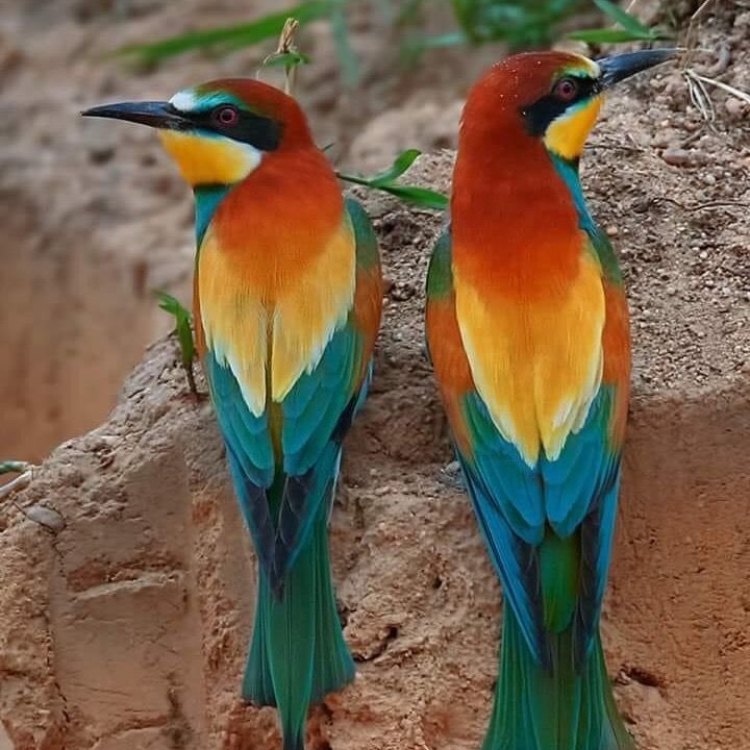
The Amazing Bee Eater: A Colorful Hunter in the Skies
Disclaimer: The content provided is for informational purposes only. We cannot guarantee the accuracy of the information on this page 100%. All information provided here may change without prior notice.


